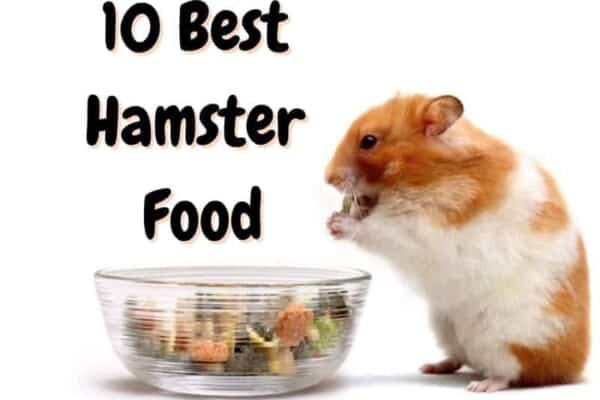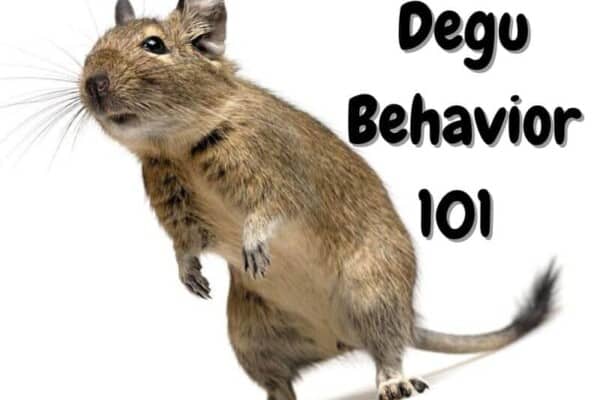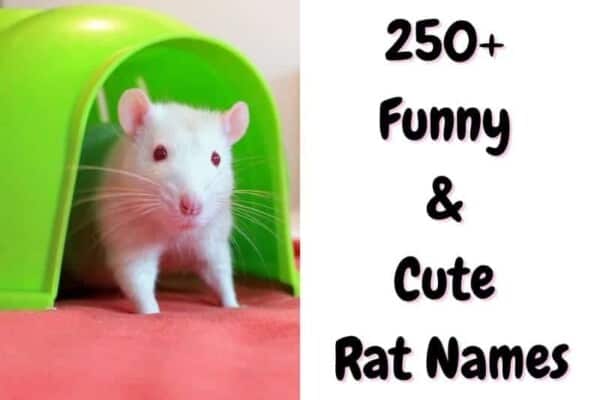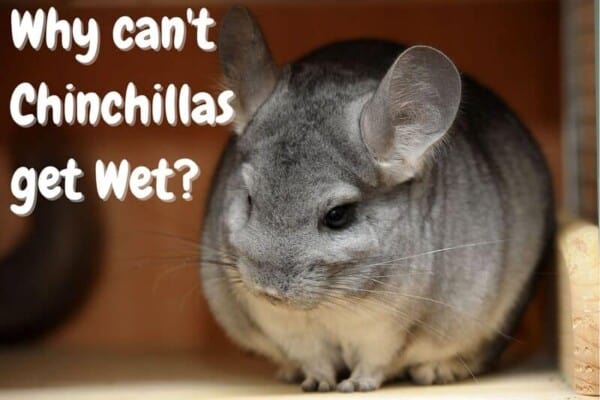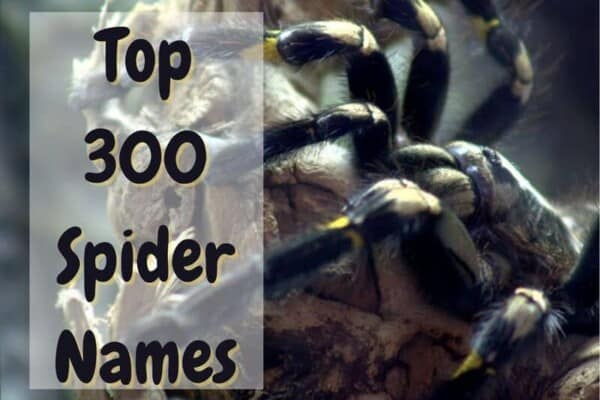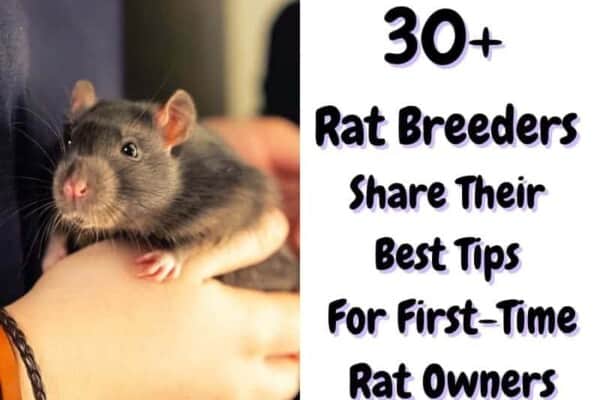This fact-packed guide will introduce you to the best food sources that are perfect for your chinchilla. Keeping a chinchilla as a pet requires a balanced diet that is healthier for them.
So, what do chinchillas eat? Your average chinchilla mainly eats vegetation, plant material, and grasses making them effective omnivores. We will list the exact foods that are helpful for their dietary needs. And you will find out how a well-rounded daily intake will keep their fragile digestive system from getting imbalanced.
Type of food chinchillas can eat
Chinchillas are often called herbivores because they eat grasses and plants, but this is not totally correct. Technically they are classified as omnivores since their diet includes much more than roots and plant material. To achieve a healthy diet, they supplement their daily intake with seasonal foods including berries, nuts, and fruits.
In this section, we will give you a detailed list of the food chinchillas can eat as well as the type of food they should stay away from. Chinchillas can eat a wide variety of natural food like hay, vegetables, dried fruits, nuts, berries, dried plants, and herbs.
1. Hay that is recommended for your chinchilla
- Alfalfa hay (low dust/hypoallergenic)
- Blue Grass hay
- Botanical hay
- Oat grass
- Orchardgrass
- Oxbow hay (low dust/hypoallergenic)
- Timothy hay (low dust/hypoallergenic)
2. Safe Vegetables
- Potato
- Sweet potato
- Pumpkin
- Squash
- Celery
- Carrot
- Cucumber
- Kale
- Turnip greens
- Collard greens
- Parsley
- Dandelion greens (if fresh, but good also if dry)
- Alfalfa
3. Chinchillas should eat dried fruits only
- Pears
- Apples
- Strawberries
- Raspberries
- Blackberries
- Currants
- Raisins
4. Nuts
- Almonds
- Pecans
5. Berries (dry organic kind)
- Hawthorne berries
- Mountain ash berries (rowan berries) – up to 3 per day
6. Dried plants and herbs
- Marigold
- Chamomile flowers
- Crushed Rosebuds and Rose petals
- Whole Rosehips
- Purple/pink Rosebuds
- Honey Suckle
- Sunflower petals
- Hawthorne leaves
- Organic nettle
- Jasmine
- Luffa bits
- Oat Groats
- Calendula
- Apple blossoms
- Raspberry alfalfa
- Purple globes (clover)
source: pdsa.org.uk
7. Pellets and nuggets for chinchillas
When it comes to food you can buy either online or in a pet shop, you may feed your chinchilla these brands of pellets and nuggets:
- Oxbow (Essentials) chinchilla pellets
- Kaytee (Timothy Complete fiber) chinchilla pellets
- Vitacraft (Vita Nature) chinchilla pellets
- Mazuri chinchilla pellets
- Shredded wheat (unfrosted kind)
- Cheerios (regular)
- Organic whole oatmeal
The first thing you want to pay attention to is the kind of pellet food that is designated for chinchillas. Some cheap pellet foods can have added fillers that are not healthy for a chinchilla.
If you see that these pellets include soy or corn, you want to avoid these at all costs. These are toxic for chinchillas and are most likely to show up in off-brand manufacturer brands. While these may be fine for rabbits and guinea pigs, these will be toxic for your chinchilla to eat. They need pure mixes of organic hay that are processed into pellet form.
The type of food chinchillas should avoid
1. Vegetables that are not recommended for your chinchilla
- Lettuce
- Broccoli
- Cabbage
- Spinach
- Peas
- Asparagus
- Rhubarb and Rhubarb leaves
- Food with fillers that include corn and soy
2. Fruits you should avoid
- Bananas
- Avocado (yes, avocado is scientifically a fruit)
- All fresh fruits (seed-bearing or not)
3. Don’t give you chinchillas these nuts
- Sunflower seeds
- Peanuts
- Dried corn
- Any nut with high-fat content
4. Berries you must not give your chinchilla
- Baneberry (toxic)
- Holly Berry (toxic)
- Ivy berry (toxic)
- Mistletoe berry (toxic)
- Pokeberry (toxic)
- Privet berry (toxic)
- White Mulberry (toxic)
- Yew berry (toxic)
5. Plants and leaves to avoid
- Ivy
- Lilly plants
- Hemlock
- Nightshade
- Yew
- Poinsettia
- Flamingo flower
- Rhododendrons
How often and when to feed your chinchilla
Proper chinchilla care means that there are some ground rules as to how often and how much and when is good to give your chinchilla the right amount to eat.
- A chinchilla is always going to be the most active at the break of dawn and at dusk. This would be when they are searching for food because they’re hungry, so dawn and dusk are the ideal times of the day to serve their food. The rest of their time is spent foraging around and gnawing on sticks and stalks.
- Smaller chinchillas will need roughly a tablespoon of food pellets mixed with other goodies. You can give these in a small container that they will search through. Ceramic sauce bowls work best since they can’t chew on them so easily.
- Grown chinchillas will need at least two tablespoons of mixed pellets and snacks. If you prefer to hand-feed these snacks, that’s up to you if you want to socialize with them. Be aware that you also need to feed them once again at dusk.
What is the balance between pellets and natural food?
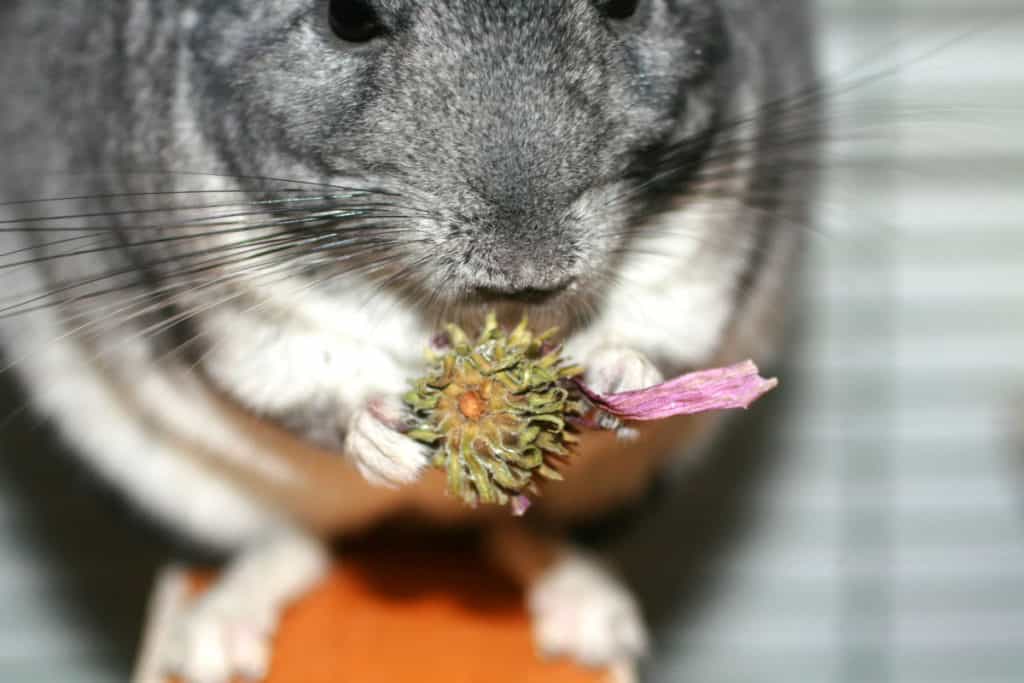
The best balance between supplying pellets and natural food comes from a mixture of all these foods. Here is an example of what you should do when it’s feeding time and providing healthy chinchilla treats.
Daily feeding routine
An average daily intake includes 15-35% fiber intake, 15-20% protein intake, and 2-5% fat intake. At best they can be very healthy with just two tablespoons of pellets per day. Place one tablespoon in the morning and then once again, another at night.
Using your imagination, you can mix into that tablespoon some added treats such as fresh vegetables, dried fruits, and other goodies. These will need to be chopped into small bits roughly the size of your pellets. Keep in mind that chinchillas can choke on vegetables that are too big to chew.
Freshness in pellets is important
Store your pellets in an airtight container. The fresher you can keep these pellets will determine how often you need to buy fresh pellets. We highly recommend buying a vacuum sealer and sealing bags that you can put into a cool and dry place.
The second option is to find plastic containers that you can seal and suck the air out of, like those that have some burping gadget or pump attachment. While chinchilla food pellets aren’t very expensive, dried fruits, nuts, plants, and herbs are all moisture sensitive.
Try putting all your snacks into a container that is sealable. If you’ve seen those large pill box organizer containers, these can store all your dried goods, flower buds and herbs, and dried fruits. You may also invest in a good dehydrator machine to dry your own natural fruits and plants.
Switching pellet brands
If you find a new brand of pellets that is better than a previous brand, it is best not to give your chinchilla new pellets straight away. This will disrupt their digestive system by switching suddenly. Start with this simple process for changing pellet brands.
- First week: 25% of the new brand mixed with 75% of the old brand
- Second week: 50% to 50% mix of both brands mixed together
- Third week: 75% of the new that’s mixed with the older brand
- Fourth week: 100% of the new brand that has nothing added from the old brand
Examples of chinchilla food recipes
Young diet recipe
Since smaller chinchillas can choke on large pellets, you need to break larger pellets in half. This keeps them from stuffing a whole pellet into their mouth, and possibly choking by accident. I make one tablespoon of food in one-third proportions.
The first is the pellets, the second is natural herbs, vegetables, and dried flowers. The third is a mixture of snacks like dried fruits or nuts that are diced into small bits. Add these all together into a feeding bowl. Take note to see what they eat and what they don’t. This will develop your personal recipe for when they get older.
Adult diet recipe
The adult recipe is the same but I tend to change the vegetable, flowers, herbs, and snacks less often. Carefully watch what they like over time and write down what they ate and didn’t eat. You have to do this when they are young so they are exposed to new flavors all the time.
If they prefer more herbs and flowers, give those instead of rosebuds. As for snacks, never go over the one-third rule. They only need 2-5% fat from dried fruits or edible nuts that are lower in fat.
Chinchilla treats
Treats are truly one part of watching your chinchilla enjoy good stuff every once and a while. The problem is that these treats cut into their dietary needs, so you have to limit them.
Raisins, dried fruits, and nuts are fine but they are high in sugar and fats. You can easily get away with giving Cheerios or sections of shredded wheat. Giving little slices of turnip that are loaded with fiber is a good idea. Chewing a dry pear is the perfect chinchilla treat with low moisture content.
If you decide to give a treat outside of their normal feeding time in the morning and at dusk, choose high-fiber snacks instead. They will be eager to have a snack if they are chewing through hay all day. And it’s a good reason to socialize with them throughout the day.
What do you give a baby chinchilla for food?
Most new owners of a little chinchilla will very likely get a juvenile that is 10-12 weeks old. This is after they have been weaned and are eating solid food and hay.
Their diet is going to be very simple and starts with quality Timothy hay and a quality brand of chinchilla food pellets. You need to break them in half because of their size. At each feeding, you can start adding various additives to their food like dried flowers, vegetables, and dried fruits.
Take notes every day on what they eat and don’t eat, and always chop these bits so they are not too big for them to chew. Smaller juveniles need food that they can easily hold in their little hands. Dried fruits, flower buds, and rosebuds should also be scaled down if they are a bit too big.
Chinchilla diet Do’s and Don’ts
The Do’s of chinchilla diet
- Remember that moderation is important, so make sure you prepare one or two tablespoons per feeding according to size.
- Always cut fresh vegetables into small pieces they can chew based on their size to prevent choking.
- Always give fresh food that has not gone bad or is not going bad.
- The ratio of pellets and dried goodies should be mixed in equal portions.
- The hay that you add to their cage can be scattered around for them to forage all day. But moderation is vital for daily feeding times that you give as a supplement.
The Don’ts of chinchilla diet
- Don’t ever give them large chunks to gnaw on, they might bite off a piece too big they can’t swallow.
- Don’t give fresh fruits like apples or pears, since the moisture content is too high for them. This is why chopped fruits should always be dried and stored separately if given as chinchilla treats.
- Never give them anything they aren’t supposed to eat. Some of the food listed above foods is not only toxic, but they can also literally kill your chinchilla. They can also cause other health issues that can be costly mistakes.
1. Dental issues
Normally, a chinchilla needs to gnaw to keep its teeth from growing too long. Not having enough chewing toys or foods that keep their teeth from overgrowing is a problem. But giving the wrong foods can cause dental harm to their teeth.
Natural sugars can cause their teeth to rot and become infected, leading to abscesses and other mouth sores. Even tooth pain will cause them to not eat properly. This is another reason why too much natural sugar is bad for chinchillas.
2. Digestive problems
Your chinchilla needs a high fiber diet and if they don’t have enough, they will have a poor appetite. It can be from tooth pain, stress, and an overall poor diet. At this point, if you see they are not eating, or have fewer droppings, they might be having digestion problems.
3. Sudden change in diet
The weather, changes in season, and even the change in noises outside can all cause issues for your chinchilla. Be aware of the temperature and keep it constant so they are not affected.
Animals respond poorly to natural disasters like earthquakes, and hurricanes. Even a heatwave or cold snap will cause them to disrupt their eating habits. If you notice any change in how much or lack of eating, it could be from natural or unnatural elements causing them stress.
Can chinchillas eat other pet food?
While you could feed a chinchilla on other kinds of food such as rabbit, guinea pig, or hamster food, it’s not always healthy for them. They are packed with fillers that can include corn and other ingredients not essential to chinchillas. You’ll certainly want to avoid animal food such as cat or dog food as these contain soy, meat, and corn that can make chinchillas sick.
Rabbits, guinea pigs, and hamsters are not similar to chinchillas so their food pellets should not be substituted. Chinchilla food pellets contain a very specific amount of grasses and hay that are shredded and compacted into pellet form. This is the purest fiber they need in their food, so never switch between brands.
What do chinchillas eat in the wild?
Because chinchillas are omnivores in the wild, they will eat different things all through the year. They may eat grasses and leaves and even bark from trees as long as they can get their fiber intake. On occasion, they might eat insects or anything that appeals to them.
The only problem with this is they don’t know what is healthy for them and many in the wild can become sick. Eating the wrong flowers and plants can lead to stomach problems, yet many who live in a specific dry region will stick to dry grasses. They will even eat cactus fruit for gaining some liquid refreshment.
All the while, they are trying to avoid predators throughout the day, so life as you can expect is rough. It’s the strongest that survive in the wild, so the life expectancy of chinchillas is dramatically lower. Chinchillas ultimately live longer in captivity if they get their diet right.
How long can a chinchilla go without eating?
The longest any chinchilla can go without food or water is one day. If they don’t have food to eat they will stop having an urge to eat. Any owner that goes away for the weekend and forgets to have plenty of hay and grass for them is putting their chinchilla’s health at risk.
If you have a chinchilla, you need to be very careful about its nervous nature. They are very weak for survival if they are raised in captivity. So if you miss a single meal, it can become an issue of life or death very easily.
The trauma of not having food is the main problem and causes major mental issues. They may drink some water but will not touch their food. If this happens you have to get your chinchilla to a vet immediately so they can get nutrients into them fast.
What do chinchillas drink?
Your chinchilla will only drink water and they will know when they’re thirsty, so you do not have to force the issue. They will prefer a water bottle that is hung in their cage. This is better than having a water bowl since a wet chinchilla is a whole health issue that you don’t want.
A water bottle should be filled with clean water daily and refilled if it starts getting low. Your chinchilla will drink from it when they need water and never go over that requirement. In actuality, they rarely drink more than 1 or 2 tablespoons a day as an adult, so you don’t need a large drinking bottle.
If you own more than one chinchilla, then a single drinking bottle is enough for two or three. Obviously, you’ll need to place the bottle lower for younger chinchillas, since they’re smaller.
Related articles:
- Chinchilla cage setup – How to set up the perfect habitat for your chinchilla
- How much do chinchillas cost? A complete cost breakdown
References and further reading:
- The nutrition of the chinchilla as a companion animal–basic data, influences and dependences, P Wolf, A Schröder, A Wenger, J Kamphues
- Studies on the nutritional requirements of chinchillas, G P LARRIVEE, C A ELVEHJEM
- Chinchillas – Feeding, Rick Axelson,
Contents
- Type of food chinchillas can eat
- The type of food chinchillas should avoid
- How often and when to feed your chinchilla
- What is the balance between pellets and natural food?
- Examples of chinchilla food recipes
- Chinchilla treats
- What do you give a baby chinchilla for food?
- Chinchilla diet Do’s and Don’ts
- A few typical diet-related issues
- Can chinchillas eat other pet food?
- What do chinchillas eat in the wild?
- How long can a chinchilla go without eating?
- What do chinchillas drink?



